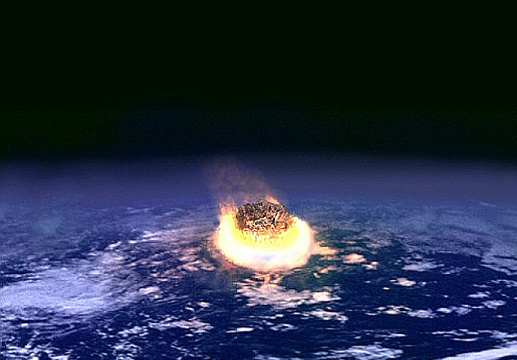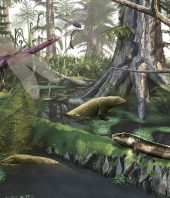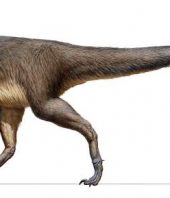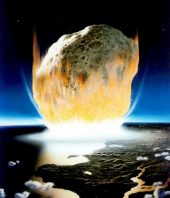The oceans soured into a deadly sulfuric-acid stew after the huge asteroid impact that wiped out the dinosaurs, a new study suggests.
Eighty percent of the planet's species died off at the end of theCretaceous Period 65.5 million years ago, including most marine life in the upper ocean, as well as swimmers and drifters in lakes and rivers. Scientists blame this mass extinction on the asteroid or comet impact that created the Chicxulub crater in the Gulf of Mexico.
A new model of the disaster finds that the impact would have inundated Earth's atmosphere with sulfur trioxide, from sulfate-rich marine rocks called anhydrite vaporized by the blast. Once in the air, the sulfur would have rapidly transformed into sulfuric acid, generating massive amounts of acid rain within a few days of the impact, according to the study, published today (March 9) in the journal Nature Geoscience.
The model helps explain why most deep-sea marine life survived the mass extinction while surface dwellers disappeared from the fossil record, the researchers said. The intense acid rainfall only spiked the upper surface of the ocean with sulfuric acid, leaving the deeper waters as a refuge. The model could also account for another extinction mystery: the so-called fern spike, revealed by a massive increase in fossil fern pollen just after the impact. Ferns are one of the few plants that tolerate ground saturated in acidic water, the researchers said.
The Chicxulub impact devastated the Earth with more than just acid rain. Other killer effects included tsunamis, a global firestorm and soot from burning plants. [The 10 Best Ways to Destroy Earth]
The ocean-acidification theory has been put forth before, but some scientists questioned whether the impact would have produced enough global acid rain to account for the worldwide extinction of marine life. For example, the ejected sulfur could have been sulfur dioxide, which tends to hang out in the atmosphere instead of forming aerosols that become acid rain.
Lead author Sohsuke Ohno, of the Chiba Institute of Technology in Japan, and his co-authors simulated the Chicxulub impact conditions in a lab, zapping sulfur-rich anhydrite rocks with a laser to mimic the forces of an asteroid colliding with Earth. The resulting vapor was mostly sulfur trioxide, rather than sulfur dioxide, the researchers found. In Earth's atmosphere, the sulfur trioxide would have quickly combined with water to form sulfuric acid aerosols. These aerosols played a key role in quickly getting sulfur out of the sky and into the ocean, the researchers said. The tiny droplets likely stuck to pulverized silicate rock debris raining down on the planet, thus removing sulfuric acid from the atmosphere in just a matter of days.
"Our experimental results indicate that sulfur trioxide is expected to be the major sulfide component in the sulfur oxide gas released during the impact," Ohno told Live Science in an email interview. "In addition to that, by the scavenging or sweeping out of acid aerosols by coexisting silicate particles, sulfuric acid would have settled to the ground surface within a very short time," Ohno said.
Source: Live Science
http://www.livescience.com/43960-asteroid-extinction-sulfur-ocean-acidification.html






